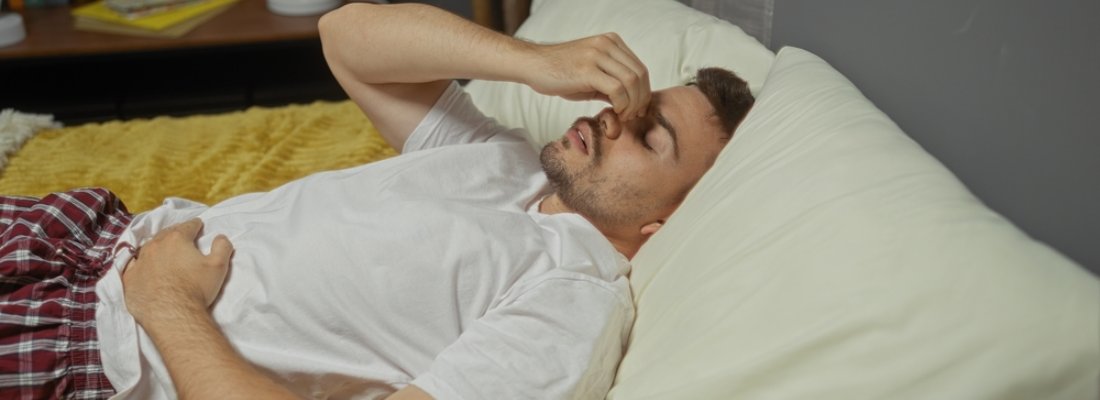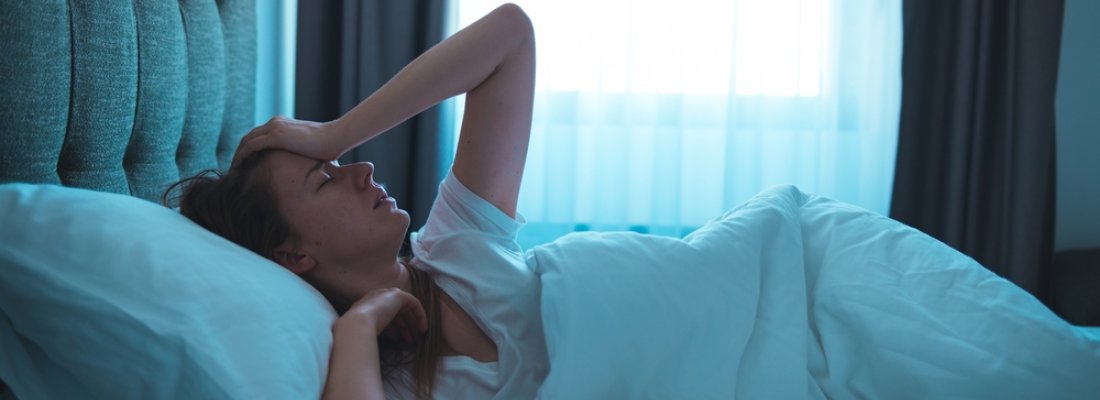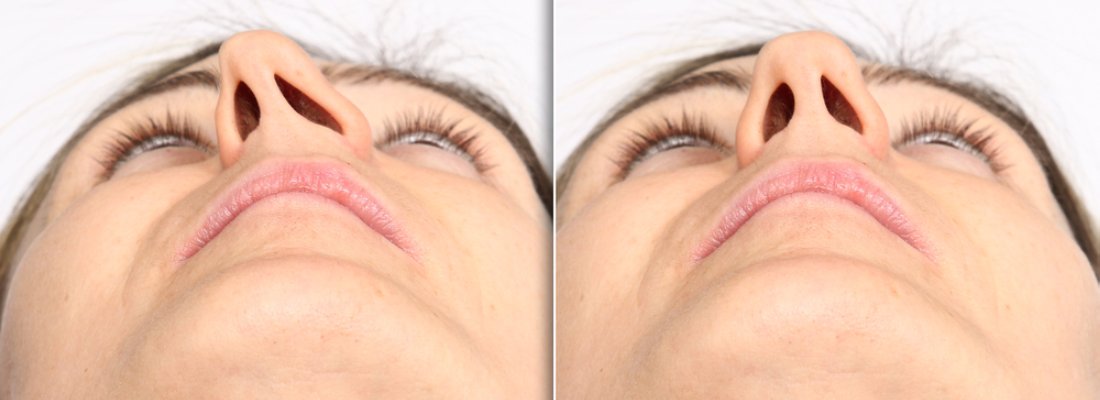
Many factors participate in making or breaking the quality of one’s sleep. Sleep apnea is a common sleeping disorder that results from disruption in breathing patterns. One of the reasons why there may be a hindrance in breathing is a deviated septum. Have you ever wondered how deviated septum and sleep apnea are interlinked? Let’s have a quick overview of the terminologies.
- Deviated Septum: Septum is the middle tissue inside the nose. When it deviates from its original position, it becomes a ‘deviated septum’.
- Sleep Apnea: Sleep apnea is a sleeping disorder that transgresses due to a person’s inability to maintain a smooth breathing mechanism.
- The Link Between Them: In people with a deviated septum, there are higher chances of breathing complications. Thereby there is a profound association between a deviated septum and obstructive sleep apnea.
This blog explores just that! Read on for some riveting insights into the connection between deviated septum and sleep apnea.
Understanding Deviated Septum

Around 80% of people have a deviated septum, making one nasal cavity larger than the other. To simplify, the septum is the middle thin wall inside your nose. When it deviates or switches from its actual position, the division between the nasal passages becomes uneven. Consequently, this structural deformity disturbs the smooth breathing mechanism during sleep. This further explains the relationship between deviated septum and sleep apnea.
A deviated septum results from different causes, many of which are combinations of characteristics that you may have had from birth. Other times, it may prevail due to life events like facial trauma, and even a little amount of family history.
Understanding Sleep Apnea

Sleep apnea occurs when there are frequent breathing pauses while you’re asleep. This interruption can happen often throughout the night and lasts anything from a few seconds to many minutes. While there are other varieties as well, obstructive sleep apnea (OSA) is the most prevalent type of sleep apnea.
Precisely, OSA is the airway blockage that develops temporarily because of excessive relaxation of the muscles at the back of the throat. Snoring loudly, gasping for air as you sleep, and excessive daytime tiredness are common symptoms. While there are other causes of this sleeping disorder, the link between deviated septum and sleep apnea is profound.
Some other causes of sleep apnea
Deviated septum is not the only driving factor sleep apnea. The following are some other variables that raise the possibility of sleep apnea:
- Being overweight: Obesity patients have fat deposits around their necks. Therefore, these frequently create breathing issues by constricting the airway.
- Gender: Men are more likely than women to get sleep apnea before the age of fifty, while women are more likely to have it after that age.
- Age: As people age, their risk of developing any kind of sleep disturbance, including sleep apnea, increases.
- Neck circumference: Next, your neck circumference and airway narrowness also correlate negatively; the larger your neck circumference, the smaller your airway.
- Nasal congestion: Also, breathing is interfered with by congestion in the chest or nose. Because of the decreased blood oxygen levels, it may cause you to wake up at midnight. Essentially, the same reason explains the relation of deviated septum and sleep apnea.
- Family background: You may also be predisposed to sleep disorders such as apnea due to your genetic makeup. Moreover, you have an increased risk of contracting it if a member of your family has experienced it.
- Underlying conditions: Furthermore, individuals who suffer from asthma or cardiac problems are more likely to develop sleep apnea.
- Consuming tobacco: Additionally, smoking can harm your lungs, which can lead to breathing issues.
- Drinking alcohol: Alcohol, sedatives, and tranquilizers might interfere with your body’s natural ability to breathe.
Connection Between Sleep Apnea and Deviated Septum
Moving onto the main query, how are deviated septum and sleep apnea related? Both of them are associated with breathing during sleep. Due to deviation in the septum, the airway encounters a minor blockage, eventually hindering the regular breathing process. A decrease in oxygen levels brought on by this increased resistance may cause the brain to wake the individual up so they can start breathing again, causing fragmented sleep. Therefore, studies found out that OSA was 4.39 times more common in patients with septal deviation than in those without it.
Can a Deviated Septum Cause Sleep Apnea?
Given the strong relevance between the two, a deviated septum can indeed cause sleep apnea. By obstructing airflow through the nasal passages, a deviated septum can exacerbate existing issues with breathing during sleep. Often, for people who are already subject to sleep disorders, a deviated septum can make things worse. However, it is important to note that it is not the only cause. Other factors that cause OSA are higher neck circumference, genetics, and obesity.
Can Fixing Deviated Septum Help Resolve Sleep Apnea?
Mostly, fixing a deviated septum can help reduce the symptoms of sleep apnea given that no other factors are involved. By straightening the septum and widening the nasal airways, surgery such as septoplasty can possibly increase airflow. Following this operation, many patients report reduced symptoms of sleep apnea and improved quality of sleep. To ascertain whether surgery is necessary for a given ailment, it is imperative to speak with a sleep specialist.
However, this only works with cases exclusive to deviated septum and sleep apnea. For congenital apnea, other treatment options like CPAP and sedatives may be beneficial.
Treatment Options for Sleep Apnea and Deviated Septum
The key to a peaceful night’s sleep is the efficient management of deviated septum and sleep apnea. Following are some treatment options you can consider:
- Continuous Positive Airway Pressure (CPAP): During sleep, a CPAP machine uses a mask to provide air pressure to keep the airways open. Usually, this is obstructive sleep apnea’s initial course of treatment.
- Lifestyle Modifications: Losing weight, abstaining from drugs and alcohol, and shifting sleeping positions can all have a big impact on how severe sleep apnea is.
- Oral Appliances: For mild to moderate sleep apnea, dental appliances that adjust the jaw can assist maintain an open airway.
- Surgery for Sleep Apnea: Surgical procedures like UPPP or MMA may be required to remove extra tissue or realign the jaws.
- Surgery for Deviated Septum: Septoplasty, or surgical repair, may be helpful in regulating deviated septum and sleep apnea. By improving airflow through the nasal passages, this technique may lessen the symptoms of sleep apnea.
- Home sleep study: Home Sleep Study gathers detailed information on diagnosis and individualized management strategies for people with sleeping disorders.
Final thoughts
In conclusion, there is a substantial and complex connection between deviated septum and sleep apnea. Although a deviated septum may not be the main cause of sleep apnea, it can worsen symptoms and lead to airway obstruction while you’re asleep. For those who struggle with sleep, knowing this link is essential since treating a deviated septum may result in better breathing and higher-quality sleep.
If you feel that a deviated septum might be harming your sleep or if you’re experiencing signs of sleep apnea, consider consulting a sleep expert. Examining the various therapy alternatives can help you achieve better overall health and a good night’s sleep.


